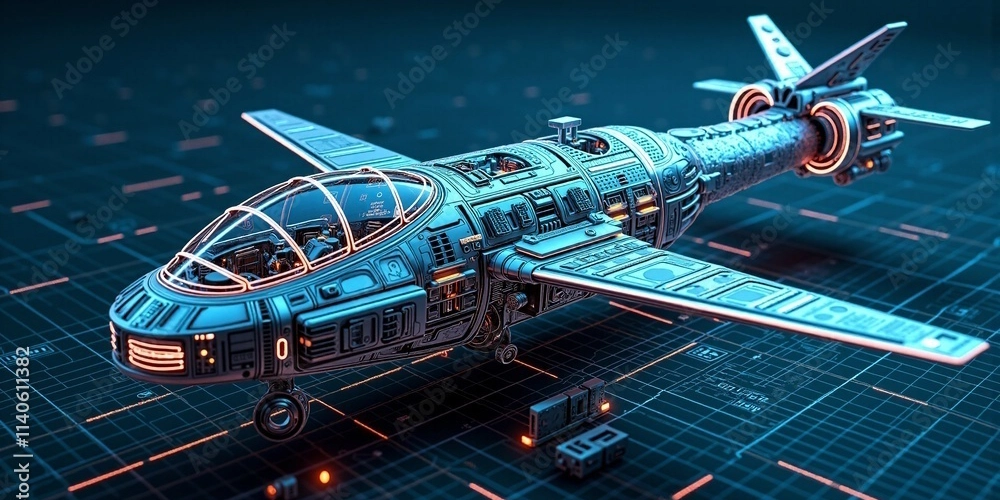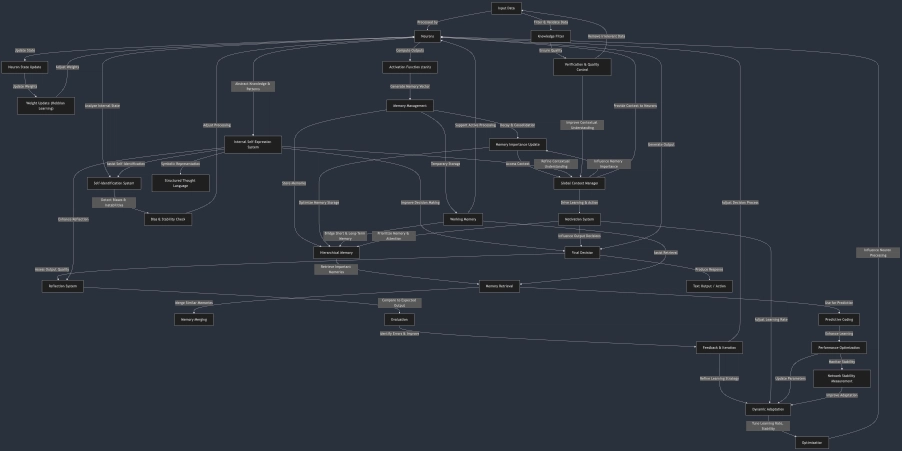Soaring with Silicon: A Comprehensive Guide to Computers in the Aviation Industry
The aviation industry is one of the most technologically advanced sectors in the world, relying heavily on computers to ensure safety, efficiency, and precision. From the cockpit of an airplane to the control towers at airports, computers play a critical role in every aspect of aviation. In this blog post, we’ll explore the various types of computers used in flying machines, airports, and helipads, and how they contribute to the seamless operation of the aviation ecosystem. Computers in Flying Machines Modern aircraft are essentially flying data centers, equipped with numerous computers that manage everything from navigation to passenger comfort. Here are the key types of computers used in airplanes and helicopters: 1. Flight Management System (FMS) The Flight Management System (FMS) is the brain of an aircraft’s navigation and flight planning. It integrates data from multiple sensors, including GPS, inertial navigation systems, and air data computers, to calculate the optimal flight path. The FMS also automates tasks like throttle control and waypoint navigation, reducing pilot workload. Key Functions: Flight planning, navigation, fuel optimization. Why It Matters: The FMS ensures precise navigation and efficient fuel consumption, which are critical for long-haul flights. 2. Autopilot System The Autopilot System is a computer that controls the aircraft’s flight without constant manual input from the pilot. It uses data from the FMS and sensors to maintain altitude, heading, and speed. Advanced autopilot systems can even perform automated landings in low-visibility conditions. Key Functions: Altitude control, heading control, automated landings. Why It Matters: Autopilot reduces pilot fatigue and enhances safety, especially during long flights or challenging weather conditions. 3. Engine Control Unit (ECU) The Engine Control Unit (ECU), also known as the Full Authority Digital Engine Control (FADEC) in aviation, manages the aircraft’s engines. It optimizes fuel flow, monitors engine performance, and ensures smooth operation under all conditions. Key Functions: Fuel management, engine performance monitoring, fault detection. Why It Matters: The ECU maximizes engine efficiency and reliability, which are critical for both safety and cost-effectiveness. 4. Air Data Computer (ADC) The Air Data Computer (ADC) processes data from sensors that measure air pressure, temperature, and speed. It provides critical information like altitude, airspeed, and vertical speed to the pilot and other onboard systems. Key Functions: Altitude calculation, airspeed measurement, temperature monitoring. Why It Matters: The ADC ensures accurate flight data, which is essential for safe navigation and performance. 5. Electronic Flight Instrument System (EFIS) The Electronic Flight Instrument System (EFIS) replaces traditional analog gauges with digital displays in the cockpit. It provides pilots with real-time information about the aircraft’s status, including navigation, engine performance, and system diagnostics. Key Functions: Data visualization, system monitoring, navigation display. Why It Matters: EFIS enhances situational awareness and reduces pilot workload by presenting information in a clear, intuitive format. 6. Health and Usage Monitoring System (HUMS) The Health and Usage Monitoring System (HUMS) is used primarily in helicopters to monitor the condition of critical components like rotors, engines, and transmissions. It uses sensors and data analytics to predict maintenance needs and prevent failures. Key Functions: Vibration monitoring, fault detection, predictive maintenance. Why It Matters: HUMS improves safety and reduces maintenance costs by identifying issues before they become critical. Computers in Airports Airports are complex hubs that rely on a wide range of computers to manage operations, security, and passenger services. Here are the key types of computers used in airports: 1. Air Traffic Control (ATC) Systems The Air Traffic Control (ATC) system is the backbone of airport operations. It uses radar, GPS, and communication systems to monitor and manage the movement of aircraft in and around the airport. ATC computers provide real-time data to controllers, enabling them to guide aircraft safely. Key Functions: Aircraft tracking, collision avoidance, communication management. Why It Matters: ATC systems are essential for maintaining safe and efficient air traffic flow. 2. Baggage Handling Systems The Baggage Handling System uses computers to track and sort luggage as it moves through the airport. Automated scanners and conveyor belts ensure that bags are routed to the correct flights and passengers. Key Functions: Baggage tracking, sorting, and routing. Why It Matters: Efficient baggage handling reduces delays and improves the pa

The aviation industry is one of the most technologically advanced sectors in the world, relying heavily on computers to ensure safety, efficiency, and precision. From the cockpit of an airplane to the control towers at airports, computers play a critical role in every aspect of aviation. In this blog post, we’ll explore the various types of computers used in flying machines, airports, and helipads, and how they contribute to the seamless operation of the aviation ecosystem.
Computers in Flying Machines
Modern aircraft are essentially flying data centers, equipped with numerous computers that manage everything from navigation to passenger comfort. Here are the key types of computers used in airplanes and helicopters:
1. Flight Management System (FMS)
The Flight Management System (FMS) is the brain of an aircraft’s navigation and flight planning. It integrates data from multiple sensors, including GPS, inertial navigation systems, and air data computers, to calculate the optimal flight path. The FMS also automates tasks like throttle control and waypoint navigation, reducing pilot workload.
- Key Functions: Flight planning, navigation, fuel optimization.
- Why It Matters: The FMS ensures precise navigation and efficient fuel consumption, which are critical for long-haul flights.
2. Autopilot System
The Autopilot System is a computer that controls the aircraft’s flight without constant manual input from the pilot. It uses data from the FMS and sensors to maintain altitude, heading, and speed. Advanced autopilot systems can even perform automated landings in low-visibility conditions.
- Key Functions: Altitude control, heading control, automated landings.
- Why It Matters: Autopilot reduces pilot fatigue and enhances safety, especially during long flights or challenging weather conditions.
3. Engine Control Unit (ECU)
The Engine Control Unit (ECU), also known as the Full Authority Digital Engine Control (FADEC) in aviation, manages the aircraft’s engines. It optimizes fuel flow, monitors engine performance, and ensures smooth operation under all conditions.
- Key Functions: Fuel management, engine performance monitoring, fault detection.
- Why It Matters: The ECU maximizes engine efficiency and reliability, which are critical for both safety and cost-effectiveness.
4. Air Data Computer (ADC)
The Air Data Computer (ADC) processes data from sensors that measure air pressure, temperature, and speed. It provides critical information like altitude, airspeed, and vertical speed to the pilot and other onboard systems.
- Key Functions: Altitude calculation, airspeed measurement, temperature monitoring.
- Why It Matters: The ADC ensures accurate flight data, which is essential for safe navigation and performance.
5. Electronic Flight Instrument System (EFIS)
The Electronic Flight Instrument System (EFIS) replaces traditional analog gauges with digital displays in the cockpit. It provides pilots with real-time information about the aircraft’s status, including navigation, engine performance, and system diagnostics.
- Key Functions: Data visualization, system monitoring, navigation display.
- Why It Matters: EFIS enhances situational awareness and reduces pilot workload by presenting information in a clear, intuitive format.
6. Health and Usage Monitoring System (HUMS)
The Health and Usage Monitoring System (HUMS) is used primarily in helicopters to monitor the condition of critical components like rotors, engines, and transmissions. It uses sensors and data analytics to predict maintenance needs and prevent failures.
- Key Functions: Vibration monitoring, fault detection, predictive maintenance.
- Why It Matters: HUMS improves safety and reduces maintenance costs by identifying issues before they become critical.
Computers in Airports
Airports are complex hubs that rely on a wide range of computers to manage operations, security, and passenger services. Here are the key types of computers used in airports:
1. Air Traffic Control (ATC) Systems
The Air Traffic Control (ATC) system is the backbone of airport operations. It uses radar, GPS, and communication systems to monitor and manage the movement of aircraft in and around the airport. ATC computers provide real-time data to controllers, enabling them to guide aircraft safely.
- Key Functions: Aircraft tracking, collision avoidance, communication management.
- Why It Matters: ATC systems are essential for maintaining safe and efficient air traffic flow.
2. Baggage Handling Systems
The Baggage Handling System uses computers to track and sort luggage as it moves through the airport. Automated scanners and conveyor belts ensure that bags are routed to the correct flights and passengers.
- Key Functions: Baggage tracking, sorting, and routing.
- Why It Matters: Efficient baggage handling reduces delays and improves the passenger experience.
3. Passenger Processing Systems
These systems include computers used for check-in, security screening, and boarding. They integrate with airline databases to verify passenger information and streamline the boarding process.
- Key Functions: Check-in, security screening, boarding management.
- Why It Matters: Passenger processing systems enhance efficiency and security at airports.
4. Runway and Taxiway Management Systems
These systems use sensors and cameras to monitor runway and taxiway conditions. They provide real-time data to ground controllers, helping them manage aircraft movements and prevent collisions.
- Key Functions: Runway monitoring, collision avoidance, ground traffic management.
- Why It Matters: These systems ensure safe and efficient ground operations at busy airports.
Computers in Helipads
Helipads, whether standalone or part of a larger facility like a hospital or airport, also rely on computers for safe and efficient operations. Here are the key types of computers used in helipads:
1. Helipad Lighting Control Systems
These systems use computers to manage the lighting on helipads, ensuring they are visible to pilots during day and night operations. Automated systems can adjust lighting based on weather conditions and time of day.
- Key Functions: Lighting control, weather adaptation, visibility enhancement.
- Why It Matters: Proper lighting is critical for safe helicopter landings and takeoffs.
2. Helicopter Landing Systems (HLS)
The Helicopter Landing System (HLS) uses computers to guide pilots during landing, especially in low-visibility conditions. It integrates with navigation systems to provide precise guidance.
- Key Functions: Landing guidance, obstacle detection, navigation integration.
- Why It Matters: HLS enhances safety during helicopter operations, particularly in challenging environments.
3. Weather Monitoring Systems
Helipads often have weather monitoring systems that provide real-time data on wind speed, temperature, and visibility. These systems help pilots make informed decisions about landing and takeoff.
- Key Functions: Weather data collection, real-time reporting, decision support.
- Why It Matters: Accurate weather data is essential for safe helicopter operations.
Conclusion
The aviation industry is a testament to the power of computer technology, with systems that ensure safety, efficiency, and precision at every level. From the cockpit to the control tower, computers are the unsung heroes of modern aviation. As technology continues to evolve, we can expect even more advanced systems to take flight, paving the way for smarter, safer, and more efficient air travel.
Whether you’re a developer, engineer, or aviation enthusiast, the intersection of computing and aviation offers endless opportunities for innovation. So the next time you board a plane or watch a helicopter take off, take a moment to appreciate the incredible technology that makes it all possible.
What’s your favorite aviation computer or system? Let us know in the comments below! And if you’re passionate about aviation tech, stay tuned for more insights into this fascinating field. ✈️




















































%20Abstract%20Background%20112024%20SOURCE%20Amazon.jpg)






















































































































![[The AI Show Episode 142]: ChatGPT’s New Image Generator, Studio Ghibli Craze and Backlash, Gemini 2.5, OpenAI Academy, 4o Updates, Vibe Marketing & xAI Acquires X](https://www.marketingaiinstitute.com/hubfs/ep%20142%20cover.png)
























































































































































































































































-Nintendo-Switch-2-–-Overview-trailer-00-00-10.png?width=1920&height=1920&fit=bounds&quality=80&format=jpg&auto=webp#)





















_Anna_Berkut_Alamy.jpg?#)













































































































![YouTube Announces New Creation Tools for Shorts [Video]](https://www.iclarified.com/images/news/96923/96923/96923-640.jpg)





































































![[Weekly funding roundup March 29-April 4] Steady-state VC inflow pre-empts Trump tariff impact](https://images.yourstory.com/cs/2/220356402d6d11e9aa979329348d4c3e/WeeklyFundingRoundupNewLogo1-1739546168054.jpg)





























































